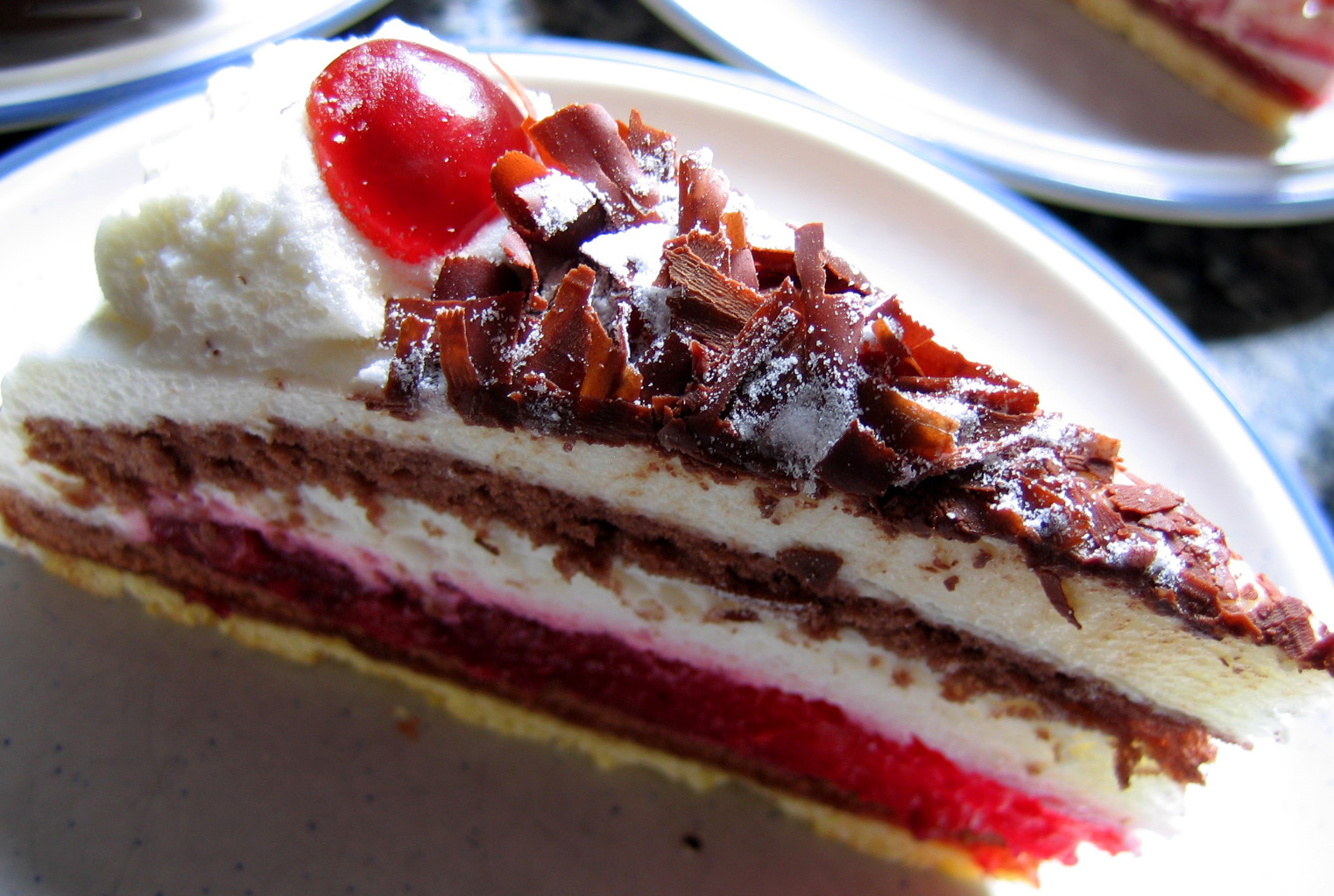On my first-ever birthday in the United States, a kind soul baked me a cake. I will never forget the look she had on her face when she put it in front of me; it was a strange mix of pride and happy expectation. Whole-heartedly I thanked her for the lovely gesture (your typical Germans love homemade goods, in case you were wondering), all the while thinking: “Why is she looking at me like this?!” We cut the cake and started eating. After a moment of silence, the person behind the cake asked, “And?” I had already thanked her, but in the German spirit of Doppelt hält besser (literally twice holds better), I added another “That’s very nice, thank you.” Curiously, this still did not seem to be satisfying. But why? Finally, she asked with the slightest hint of exasperation, “Don’t you recognize it? It’s German chocolate cake!” Chewing on a piece of the sweet dark cake, the first thought my brain produced as a response was “Why would a German cake contain coconut? That makes no sense!”
Since my first encounter with German chocolate cake in a millennium long since passed, our paths have crossed many times. I have even spotted the curious cake on an Oktoberfest menu once. Finally, a few years ago, my own partner in crime solved the mystery for me.
The story goes like this… In 1852, a man named Samuel German invented a new type of baking chocolate for the Baker’s Chocolate Company. The company generously named it after him, using the rather possessive title Baker’s German’s Sweet Chocolate.
Quite a mouthful, isn’t it?
A century or so later (some things take time!), a Texan homemaker sent a recipe using the afore-mentioned chocolate to The Dallas Morning News. She named it German’s chocolate cake. The recipe was an immediate success, and the sweet concoction became one of the most recognized and popular cakes in America.
Somewhere during its tour of fame, the name lost its possessive form and morphed from German’s chocolate cake to German chocolate cake, confusing the sweet hell out of people to this day.
So there you have it. German chocolate cake is not German at all! My brain was right! If you are looking for an actual chocolate cake from Germany, try the famous Schwarzwälder Kirschtorte (Black Forest cake), although most of the so-called Black Forest cakes I have tried here were merely a faint echo of the real deal, using pie cherries instead of sour cherries, skipping the alcohol, and replacing real whipped cream with some sugary knockoff. I only know of one place in the Bay Area so far where it tastes pretty authentic and that is Esther’s German Bakery.

Another favorite of mine is the Herrentorte (literally Gentlemen’s cake), a decadent multi-layer cake covered in dark chocolate. Yum! Did I pique your interest? Then I have to disappoint you because I have yet to find that one here in the Bay Area!
Looks like it is time to bake. And maybe, just maybe, I will share a recipe in one of my future posts… 🙂
Guten Appetit!
